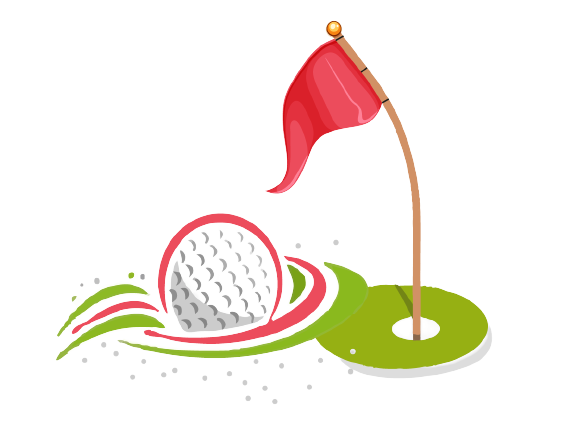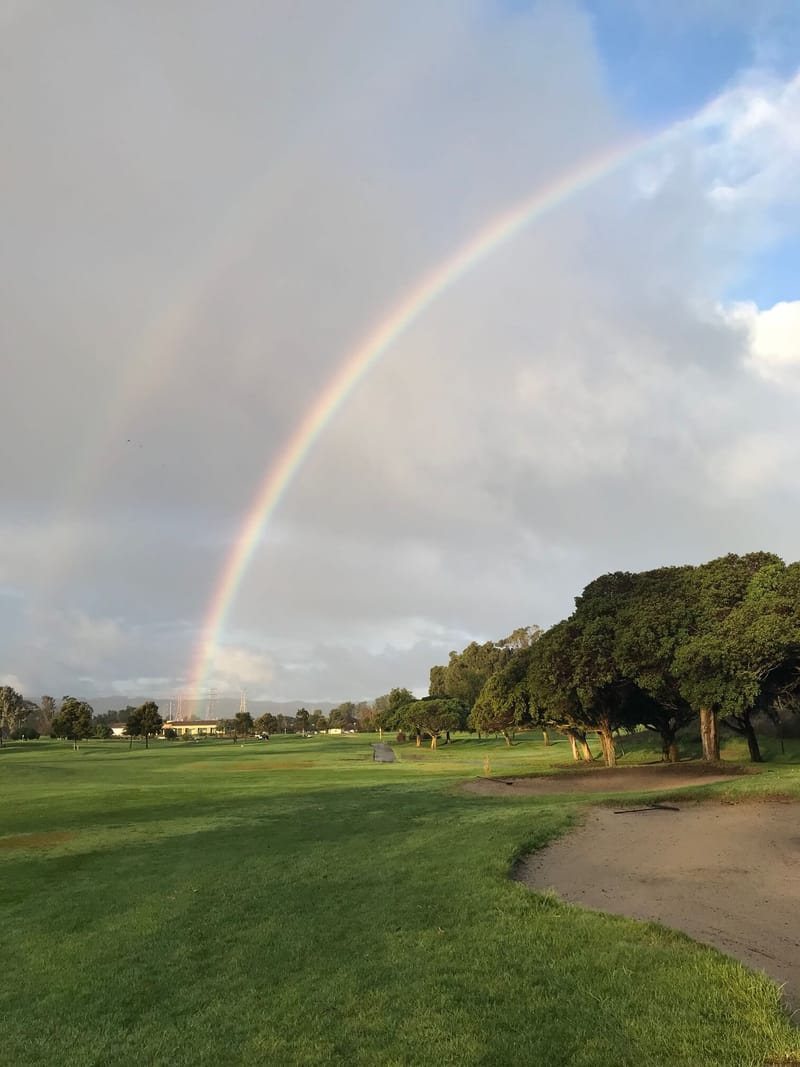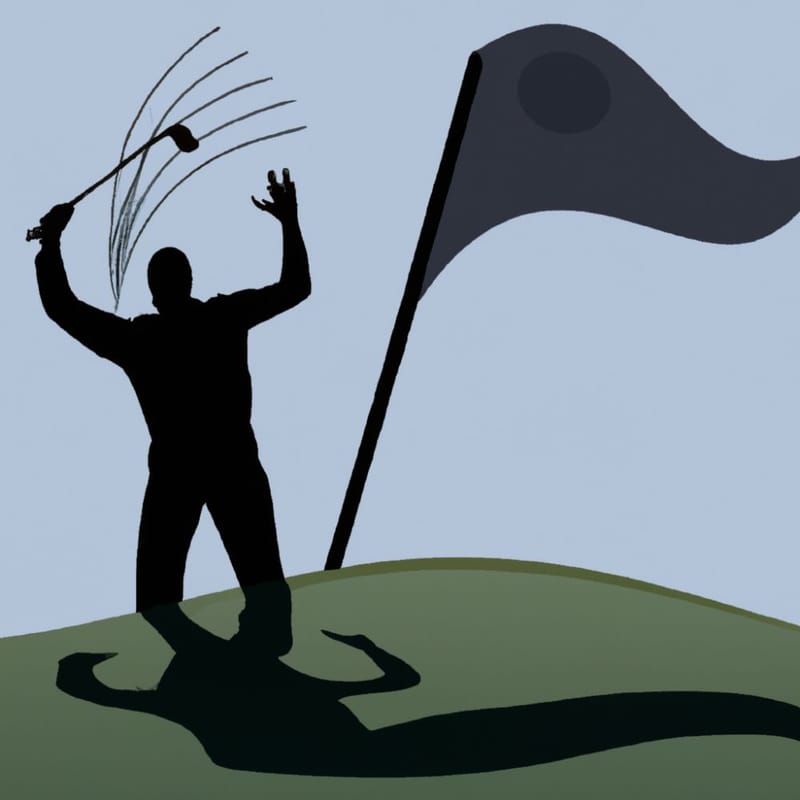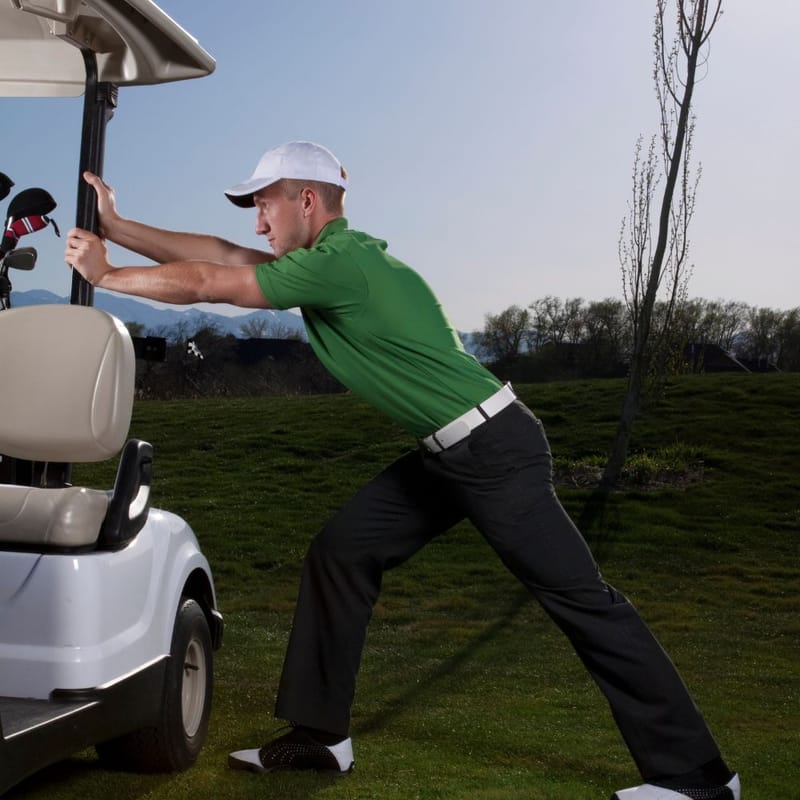Content Summary
Have you ever been frustrated on the golf course wondering why your ball is flying off to the right, out of bounds? Well, guess what, you’re not alone. This is a beginner golfers struggle when first starting out.
In this blog post, I'll explain exactly what a "golf slice" is and provide tips for fixing it. Let's get started and hopefully, you'll soon be shooting straight!
Causes of Golf Slices
Whether you’ve been playing golf for years or are just starting out, learning about the different types of golf shots is essential to improving your game.
One of the more frustrating shots that can occur on the links is a slice, which is a type of mis-hit ball that can cause your shot to fly greatly off course to the right for a right handed golfer and left for a left handed golfer.
Understanding what a golf slice is and how it happens can help you know how to fix it.
When speaking in terms of sidespin, a “slice” is when the ball rotates clockwise as it moves through the air (for righties).
Not only does this cause the ball to go significantly farther right than what was intended, but also often results in a loss of distance and accuracy.
Identifying a Golf Slice
The most common cause for slicing the ball off line happens when either your club face or swing path is incorrectly angled from your target line at impact.
For example, if your clubface has an open position at impact compared to where you were aiming originally and squared up with during address setup, then this will result in increased chances for “slicing” because you are sending more side spin onto the ball than needed.
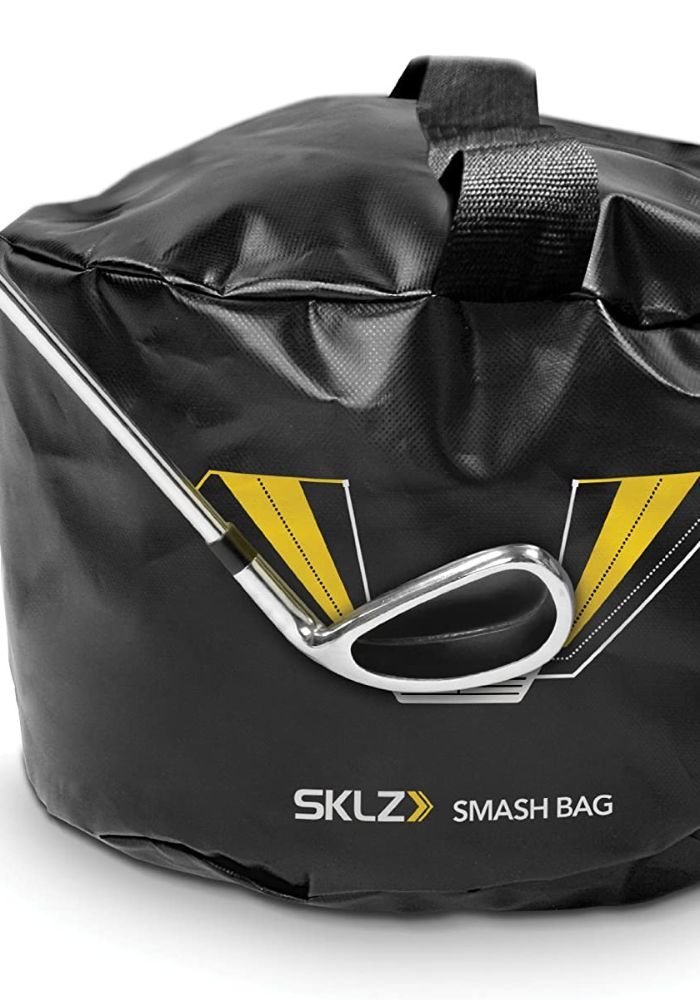
Common Reasons for a Golf Slice
Common reasons for an open or closed clubface at impact include poor grip pressure, grip position, takeaway, timing, balance and body rotation throughout the swing motion.
Finally, most golfers have improper weight transfer and/or turning of your hips which can cause the club head face to be “out of sync” with your hands at impact—most slices are caused by a combination of these swing flaws.
By properly diagnosing and addressing each possible cause, you can fix a slice and reduce your bad golf shots quickly and begin shooting lower scores out on the course.
Differentiating a Golf Slice from a Hook
When hitting a golf ball off the tee, players may experience several different types of swings that create unintended sidespin.
A golf slice is distinguished by a path that curves right to left in the air (for right-handed players), while a hook is a shot that curves left to right.
When in the presence of severe side spin, a player may also experience a push or pull, which represent weak slices and hooks respectively.
Understanding Common Swing Flaws
To determine what exactly you’re dealing with, it’s important to garner an understanding of common swing flaws and mechanical issues before making any equipment or position changes.
The rotation of the face can be thought of as responsible for all sidespins being sent away from the target line regardless of whether it is heel- or toe-side spin.
Essentially anytime you combine these shots with either poor alignment or improper clubface positioning on contact you will produce results far off target towards either side.
The direction in which it heads speaks very clearly as to where your issue lies; if it turns to the right then most likely you are releasing too early in your downswing while if it turns left then more than likely you have some form of poor delivery from setup onward going on through the swing plane.
Therefore by knowing what your body mechanics are doing within your swing it will allow for better assessment when attempting to cure common causes of slices and hooks such as leg/arm interference or simply swinging too flat/overly upright during your downswing movements.
Correcting a Golf Slice
Slicing or hooking the ball is common among golfers of all levels of experience. The good news is, there are ways to improve your game and lessen the likelihood you’ll hit a slice next time you tee up. Here are some tips to help you get on track.
First off, consider your grip; having the proper hand position can help you hit straighter shots and avoid a slice.
Make sure that the “V” formed between your thumb and forefinger points toward your right shoulder (for right-handed golfers).
For proper angle, try gripping it lightly with that same “V” pointed slightly higher in order to open the clubface at impact— this should help prevent an unintentional hook or slice before you even start to swing.
Your ball position is also important when trying to correct a slice: make sure that it is slightly forward from center in your stance so that when striking the ground behind the ball, it goes straight up instead of curving off to one side.
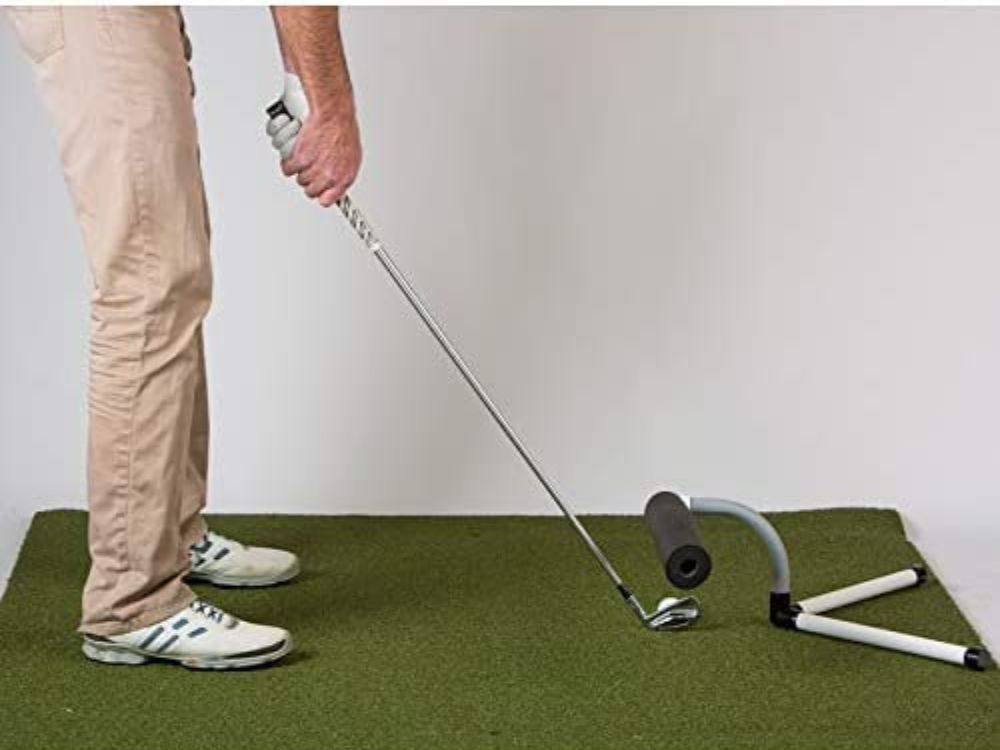
Lower Body in the Golf Swing
Don’t forget about foot alignment either; for right-handers and left handed golfers, pointing both parallel to the target line can go a long way in making sure the club shaft remains straight throughout those moments leading up to impact.
Finally, look into stabilizing your posture as well by being mindful of how both shoulders line up with each other throughout your entire swing.
Keeping them level will stop pressure on one side over another which helps produce a consistent strike as well as more solid contact with your shots overall..
If properly addressing these elements at every step of pre-shot routine doesn't solve an existing "slice" issue entirely just yet, then bring yourself back by executing shorter distance swings until the corrected technique settles in - then extend distances farther when confident enough progress has been made!
Practicing to Fix a Golf Slice
Improving your golf swing can be a daunting task. I've included some practice aid products below that will help with this.
Correcting your slice on the practice range will help greatly since trying to correct a slice on the golf course is impossible.
You need the time to hit a number of shots to ingrain the changes you are trying to make. This can only be done on the practice range.
Implementing Strategies to Avoid a Slice
The first strategy for preventing a slice is to focus on proper grip. Gripping the club correctly will allow for better control during ball contact and reduce the odds of shooting a slice.
Be sure to have at least three knuckles visible in your grip, with your hands below shoulder level when holding the club, so that they are not above or below your shoulder line at address, as this is an indication of improper grip and can cause a slice or hook shot.
The next strategy is to understand how stance affects shot direction. The feet should be square to the target line with the left foot flared out just a bit to allow for the hips to turn more. By having your stance overly open or closed it can cause an emphasis on a slice or hook.
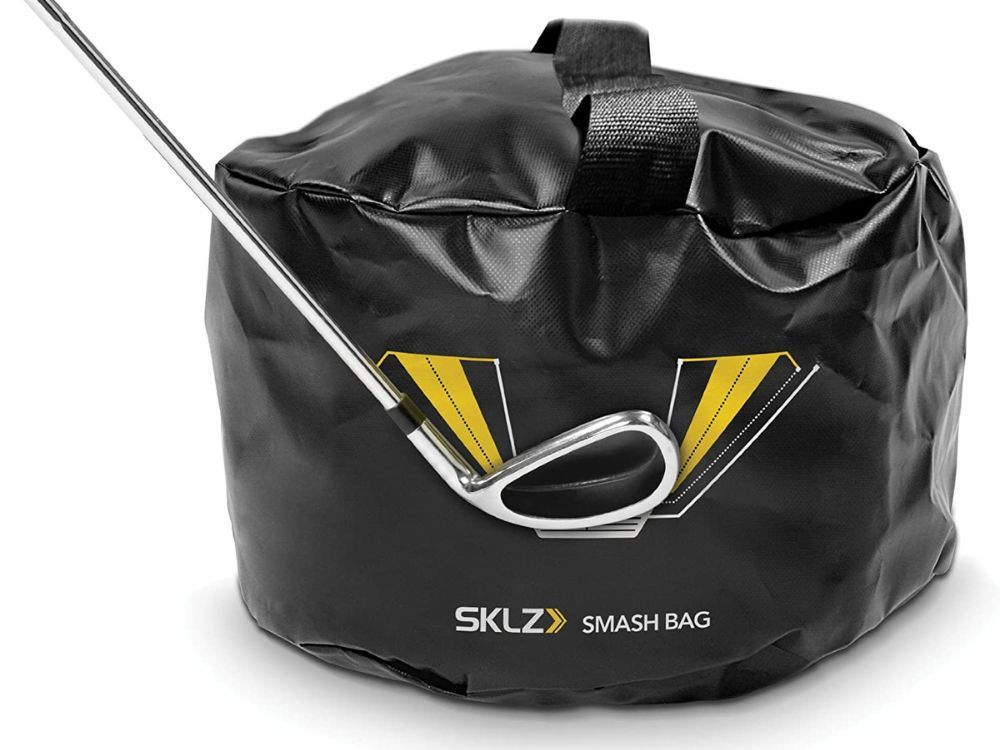
Weight Distribution
Lastly, pay attention to how weight distribution affects shot direction. Make sure you are shifting your weight properly, first right and then to the left during your swing.
Turn your hips back and out of the way as you make your turns. This allows room for your hands and arms on the way back and then on the way down keeping the swing on plane.
FAQ - Golf Slice
What is a golf slice?
A golf slice is a type of shot where the ball curves to the right (for right-handed golfers) or to the left (for left-handed golfers) of the intended target.
Why do I slice the golf ball?
There can be many reasons for a golf slice, including improper grip, improper swing path, open clubface, or improper weight transfer.
How can I fix my golf slice?
Fixing a golf slice may require a combination of changes to your grip, swing path, and weight transfer. Working with a golf instructor can be helpful in identifying and addressing the specific causes of your slice.
Is it common to slice the golf ball?
Yes, slicing the golf ball is a common problem for many golfers, especially beginners. However, with practice and proper technique, it is possible to reduce or eliminate a slice.
What clubs are best for reducing a golf slice?
There is no one club that can eliminate a golf slice, as the problem is typically caused by swing mechanics rather than equipment. However, some golfers may find that using a club with a more closed face can help reduce a slice.
How can I prevent a golf slice from happening?
To prevent a golf slice, it's important to maintain a neutral grip, take an inside-out swing path, and make sure the clubface is square at impact. Practicing these techniques regularly can help prevent a slice from occurring.
Conclusion
For most amateur golfers, it should now be obvious that the golf slice is a common and frustrating problem. Golfers try every trick in the book even using anti slice golf tees.
Fortunately, by making some simple adjustments to your posture, grip, and swing it is possible to dramatically reduce slices, hit your ball squarely and begin to hit shots more consistently on the fairway.
By improving your posture and using a proper grip for your game you will create a foundation for repeated success.
Additionally, by following many of the swing tips addressed in this article you can improve your ball flight direction and trajectory.
Using any combination of these tips can rapidly improve your swings accuracy or potentially eliminate a golfer’s slice altogether and allowing you to hit straight shots .
When it comes to correcting or combating slicing tendencies in your golf game one must remember that patience is key!
It may not happen overnight but after putting these tips into practice you are likely to find significant improvement in both accuracy and control of your shots over time. A little practice goes a long way after all!
Thank you for visiting and we hope to see you back soon!

Note: We use affiliate links and may receive a small commission on purchases at no additional cost to you.
